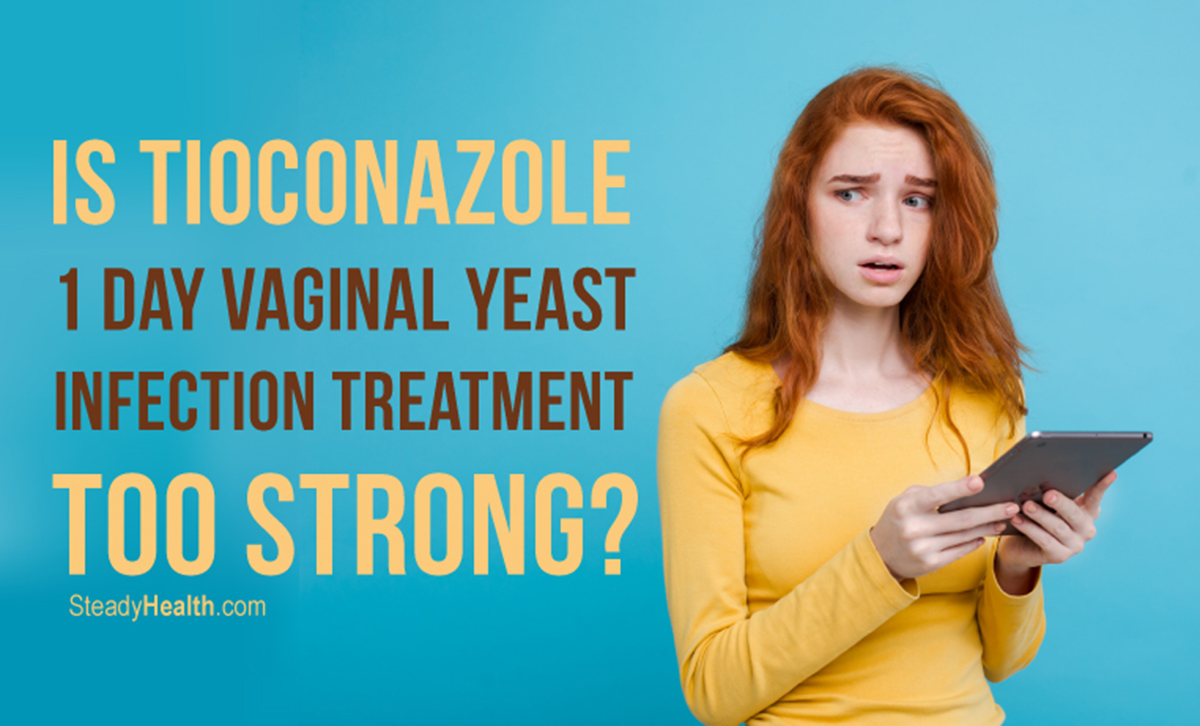Vaginal yeast infections are so common that three in four women will experience at least one during their lifetimes [1]. While it's always a good idea to see a doctor to make sure you really do have a yeast infection rather than something else, any woman who's already had vaginal candidiasis in the past is in a good position to recognize the symptoms — vaginal itching, vaginal discharge that has the appearance of cottage cheese, and red, sore, and burning feelings "down there". [2]
If you are pretty sure you are dealing with a vaginal yeast infection, you may decide to attempt to treat it without a doctor's intervention. This is OK if you have mild symptoms, no fever or pelvic pain, aren't pregnant, and haven't recently had sexual contact that has put you at risk of sexually transmitted diseases.
While some women will look for natural home remedies for a vaginal yeast infection, others will prefer turning to antifungal medications of the azole class. Antifungal treatments for vaginal yeast infections that you can by over the counter include:
- Miconazole
- Clotrimazole
- Butoconazole
- Tioconazole [3]

What Is Tioconazole?
Tioconazole is an antifungal medication of the imidazole class. It comes in ointment form and is effective against different yeasts as well as fungi that can live on the skin, such as those that cause jock itch and ringworm. Tioconazole additionally has some capability to fight chlamydia and trichomonads, and several studies have shown it to be more effective than Miconazole. It's generally well-tolerated by patients. [4]
As with any other medication, Tioconazole does have the potential to induce unwanted side effects. These include:
- Burning
- Redness
- Itching
- Swelling
- Skin irritation and skin rashes [5]
(Those symptoms are really similar to those of a yeast infection, aren't they? If you do use Tioconazole and notice worsening burning, itching, redness, or swelling, do contact a doctor, as you may be having an allergic reaction.)
Monistat: Which Option Is Right For You?
Monistat-brand vaginal yeast infection medications are available as one, three, or seven day treatments. Regardless of which option you choose, each one again comes in several varieties. The Monistat one-day maximum strength ovule (vaginal tablet) option contains 1200 mg of Miconazole, while Monistat's one-day ointment, which comes with an applicator, contains Tioconazole at a 6.5% strength. [5]
Monistat's three-day treatment options for vaginal yeast infections all contain Miconazole rather than Tioconazole as well, at lower doses of 200 mg. [6] Its seven-day treatment options, meanwhile, each contain 100 mg of Miconazole. [7] The real difference between the various three- and seven-day Monistat options is that some come with an anti-itch cream that helps you fight those nasty symptoms, some come with anti-itch cream as well as soothing wipes, and some come with only Miconazole.
When Is Monistat One-Day Not Right For You?
If you're pregnant or a diabetic — and therefore more likely to be affected by a non-albicans species of yeast — Monistat itself recommends only the seven-day treatment options, in line with guidelines issued by the Centers for Disease Control and Prevention. [8]
The Bottom Line
Most women who are suffering from an uncomplicated yeast infection and who aren't pregnant, using birth control pills, or diabetic, can realistically choose any of the Monistat treatments and count on getting rid of their yeast infection without much hassle. Both Miconazole and Tioconazole have some advantages over the prescription Fluconazole that your doctor would be quite likely to prescribe. Fluconazole can make you drowsy as well as inducing liver and heart-rhythm problems and serious skin rashes, something most people would rather avoid. [9]
Those women who are suffering from recurrent yeast infections will, however, benefit from stronger medications. This should allay fears that Tioconazole is too strong for you.
- Photo courtesy of SteadyHealth.com


Your thoughts on this